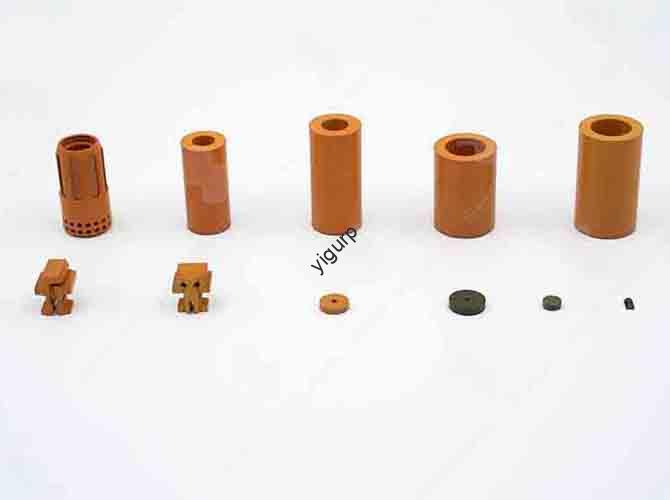If you’ve ever wondered how precise metal or plastic parts are made for industries like aerospace, Автомобиль, или медицинские устройства, the answer often lies in the CNC machining process. This computer-controlled manufacturing method turns digital designs into physical products with unmatched accuracy. But how does it work step-by-step? And what do you need to know to ensure a smooth, эффективный процесс? Let’s break it down clearly.
1. Core Stages of the CNC Machining Process: Пошаговый сбой
The CNC machining process isn’t just “press a button and wait”—it’s a structured sequence of 6 Ключевые этапы. Below is a detailed table to help you understand each step, its purpose, and key tools:
| Этап | Key Task | Цель | Essential Tools/Software |
| 1. Продукт дизайн | Create a 3D model of the part | Ensure the part meets size, форма, and function requirements | CAD Software (НАПРИМЕР., Солидворкс, Autocad) |
| 2. Выбор материала | Choose the right raw material | Match material properties (сила, долговечность, расходы) to the part’s use | Металл (алюминий, сталь), пластик (АБС, Заглядывать), древесина |
| 3. Program Writing | Convert the 3D model into machine code | Tell the CNC machine как to cut/mill the part | CAM Software (НАПРИМЕР., Мастеркам, Слияние 360) |
| 4. Настройка машины | Prepare the CNC machine for operation | Secure the workpiece and tools, adjust parameters | Workholding clamps, режущие инструменты (endmills, тренировки), суппорты |
| 5. Операция обработки | Run the program to shape the part | Turn raw material into the designed part | Минь с ЧПУ, токарный станок, or router |
| 6. Осмотр & Коррекция | Check the part for accuracy | Ensure the final product matches the design | Микрометры, surface roughness testers, ШМ (Координировать измерительную машину) |
2. Why Each Stage Matters: Common Problems and How to Avoid Them
Skipping or rushing a stage can lead to costly mistakes—like a part that’s too small, a broken tool, or a product that fails in use. Let’s use a cause-and-effect chain to see how each step impacts the end result:
- Проблема 1: Poorly designed 3D models (Этап 1) → The CNC machine follows bad data → The part doesn’t fit with other components.
Решение: Use CAD software with “design for manufacturability (DFM)” checks to fix flaws early.
- Проблема 2: Wrong material choice (Этап 2) → A plastic part meant for high heat melts during use → Product failure.
Решение: Просить: Will the part be exposed to pressure, изменения температуры, или химикаты? Choose materials accordingly (НАПРИМЕР., titanium for medical implants, aluminum for lightweight automotive parts).
- Проблема 3: Incorrect program code (Этап 3) → The machine cuts too deep or misses a feature → Wasted material and time.
Решение: Test the program with a “dry run” (Нет материала) to catch errors before machining.
3. Обработка с ЧПУ против. Традиционная обработка: What Makes CNC Better?
Вы можете думать: Why use CNC instead of traditional manual machining? Let’s compare the two with a contrast table to highlight key advantages:
| Фактор | Обработка с ЧПУ | Традиционная обработка |
| Точность | ± 0,001 дюйма (высокая точность) | ±0.01 inches (Зависит от навыка оператора) |
| Скорость | 2–5x faster for complex parts | Помедленнее, especially for detailed designs |
| Последовательность | Identical parts every time (no human error) | Variations between parts (operator-dependent) |
| Труд | 1 operator can run multiple machines | 1 operator per machine |
4. Key Tips to Optimize Your CNC Machining Process
Want to make your CNC process more efficient and cost-effective? Вот 5 actionable tips, presented as a list for easy reference:
- Optimize the machining path: Use CAM software to reduce unnecessary tool movements (saves 10–20% of time).
- Choose the right cutting tool: A carbide tool lasts 3x longer than high-speed steel (reduces tool changes).
- Monitor cutting speed: Too fast = tool wear; too slow = wasted time. Follow material-specific speed guides (НАПРИМЕР., 1,200 RPM for aluminum).
- Pre-inspect materials: Check for cracks or unevenness in raw materials to avoid machining defective parts.
- Train operators: Even advanced CNC machines need skilled staff—train teams to troubleshoot small issues (уменьшает время простоя).
Yigu Technology’s Perspective on CNC Machining
В Yigu Technology, Мы поддерживали 500+ Клиенты в оптимизации своих CNC machining process За последнее десятилетие. We believe CNC isn’t just a tool—it’s a bridge between innovation and production. Many clients initially struggle with material selection or program errors; our solution is to integrate DFM checks into the design stage and provide real-time machining monitoring. This approach cuts waste by 30% on average and ensures parts meet strict industry standards. For small-batch prototypes or large-scale production, CNC’s flexibility makes it irreplaceable—and we’re committed to making this process accessible to every business.
Часто задаваемые вопросы
1. How long does a typical CNC machining process take?
It depends on part complexity: A simple 2-inch aluminum bracket takes 10–15 minutes, while a complex aerospace component with 50+ features can take 2–4 hours. The design and program writing stages add 1–2 days for new parts.
2. Can CNC machining handle all materials?
No—CNC works best with rigid materials like metals, пластмассы, and wood. It’s not ideal for soft materials (НАПРИМЕР., мыло) or extremely hard materials (НАПРИМЕР., diamond) без специализированных инструментов. Always consult a CNC expert for material compatibility.
3. What’s the most common mistake in the CNC machining process?
А #1 mistake is ignoring DFM (design for manufacturability) in the design stage. Например, a part with a 0.05-inch internal corner might be impossible to cut with a 0.1-inch tool—leading to rework. Fixing this early saves time and money.
